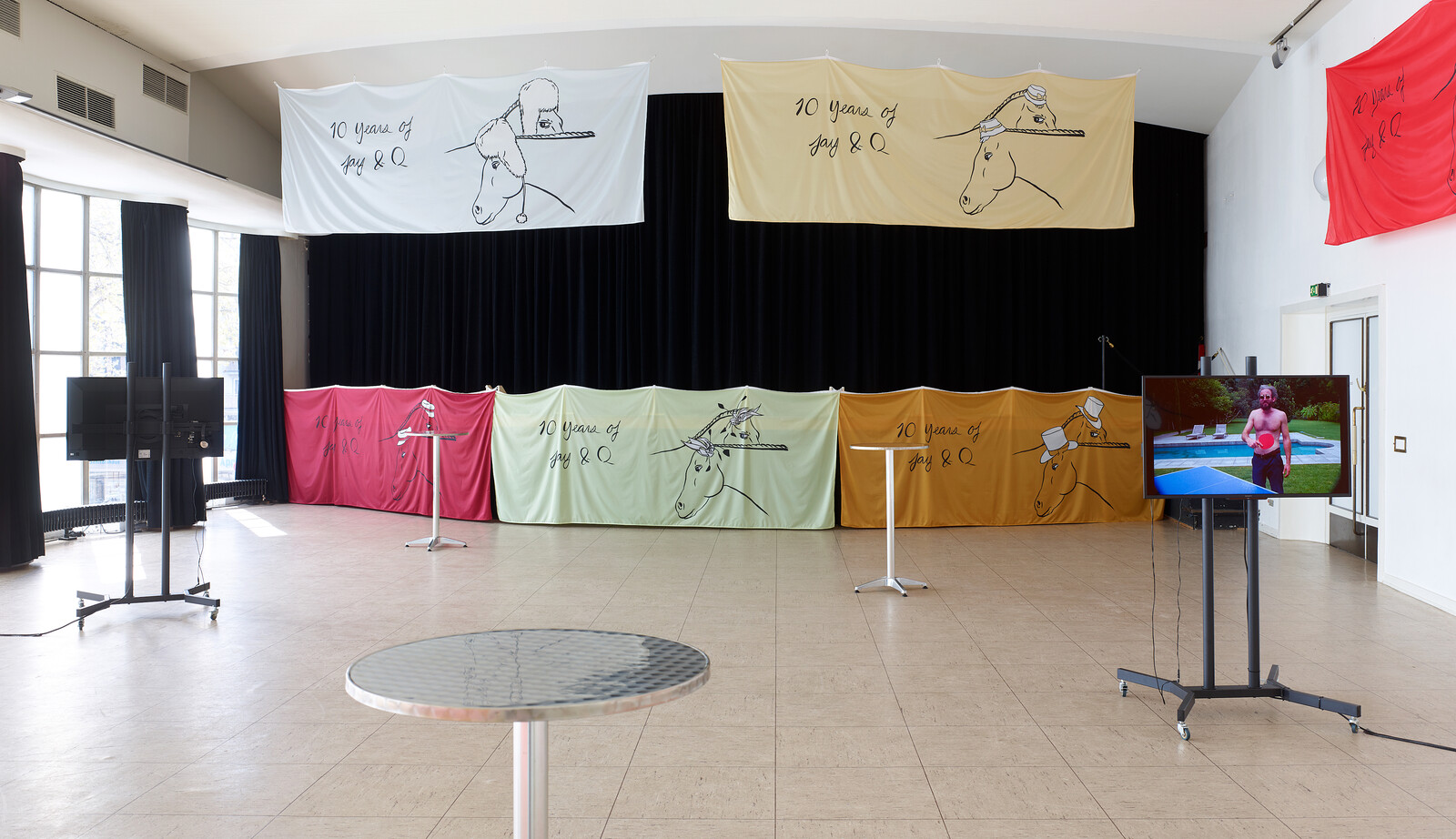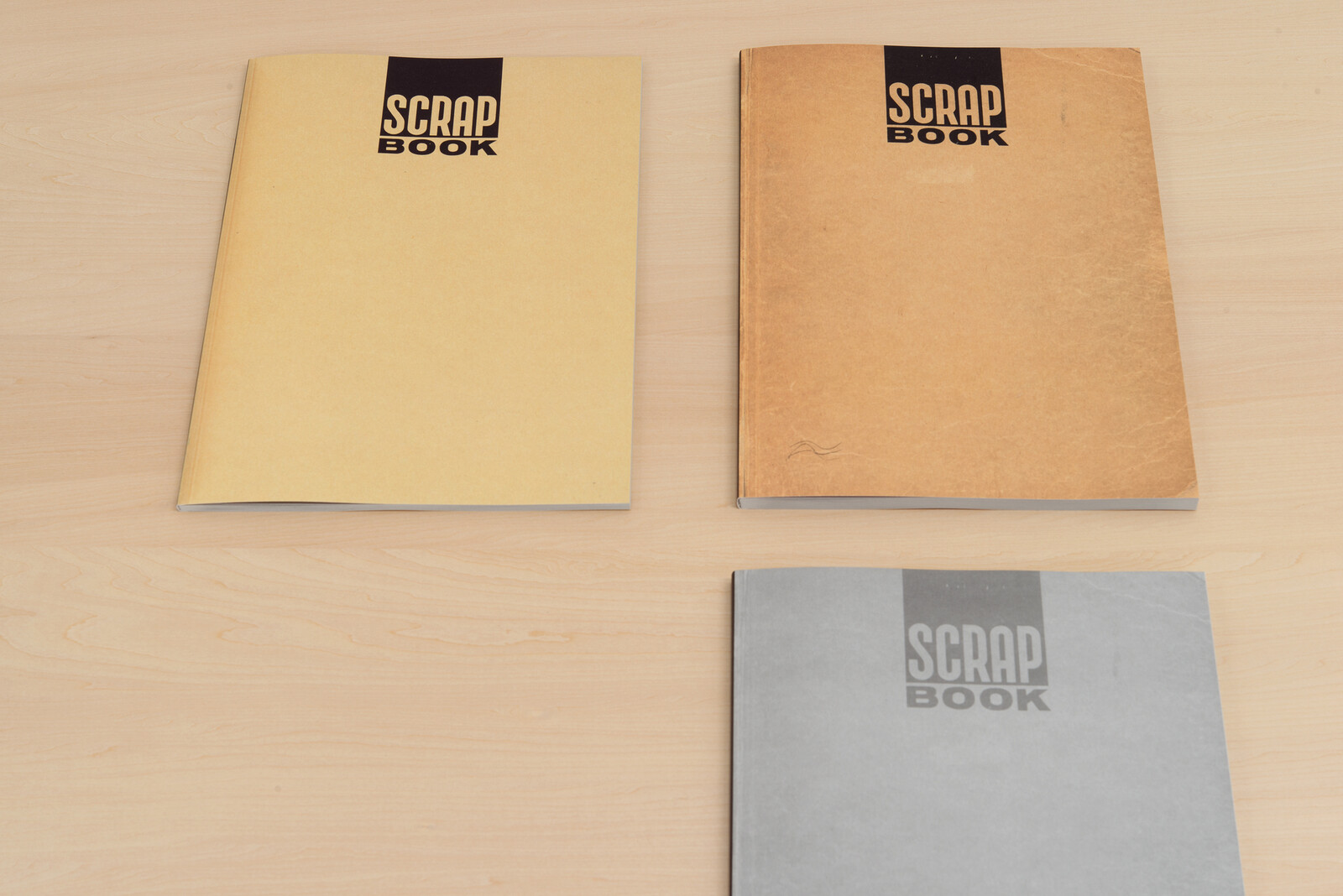The title of Jay Chung & Q Takeki Maeda’s exhibition, “The Auratic Narrative,” alludes to the kind of stories collectively told and repeated by art professionals to frame artists or their works in a way that contributes to their aura, or their presentation as unique and authentic, while creating “fictional expectations” of a future success.
Text and art wrestle throughout the show, which is divided into four chapters, each of which takes up one floor of the Kölnischer Kunstverein and includes, alongside the works, a long introductory text by the artists, who write in a singular I. Surprisingly, the speech of this self is molded from an amalgam of quotes from other artists. On the wall at the entrance, the text for the first chapter begins, “I hate competition, but the reality is that artists are engaged in a kind of race,” and carries on about the roles and games artists must play to achieve success. If the four chapters’ narratives, articulated as four stages in an artist’s life, have a personal, emotional tone that is easy to empathize with, the works are displayed in a sober, hermetic presentation. No text, only a leaflet with a floorplan and the works’ titles. The viewer, devoid of a language through which to access the art, becomes aware of its dependence on narrative. On the first floor, seven engravings—all Untitled (2006)—that resemble delicate geometric drawings, present seven sentences from the press release for the artists’ 2006 exhibition at Isabella Bortolozzi gallery, Berlin, in the form of a syntactic tree. The text-reinforcing-work convention is twisted into a Mobius strip: the press release generates the work and the work is the press release.
In the same room are works created by following given set of rules in an attempt to delegate authorship. “Outtakes and Excerpts” (2009), a series of photos of people smiling in the street, were taken by a camera with a smile detector, a surveillance device. Untitled (2014) are photos of the artists’ installation Toter Winkel [Dead Corner] at Isabella Bortolozzi in 2009, where they requested the placement of a corner cabinet, matching the bourgeois interior, in every corner of the gallery. The gesture left the gallery exposed and the meaning in the hands of the viewer. This new way of presenting the work enhances its elusive nature.
On the second floor, the text begins with the importance of building a network, or support structure, though it ends with network fatigue and hyper-connectivity’s dysfunction. On the walls, small black-and-white photos reprinted from the archive of Teruo Nishiyama, a scientist who, despite having no connection to the Japanese avant-garde art scene in the 1960s, documented the works and viewers in exhibitions and performances at the time. The auditorium on the same floor is decorated with 10 banners in distinct colors, printed with drawings of two horses wearing hats and a text reading “10 years of Jay & Q.” The artists used the production money for an exhibition at REDCAT, in Los Angeles, in 2012 to sponsor the prize for a horse-jumping championship in Ladenburg, Germany, and these banners hung at the racetrack as the artists presented the award. It’s an example of the way Chung and Maeda’s works show them twisting and tangling conventions, using strategies of estrangement, and paying attention to noncentral matters, all of which serves to load their work with a playful and elusive richness of meaning that doesn’t hide a critical stance or contradictions.
In the center of the auditorium, two monitors show Untitled (2015), a video they commissioned from filmmakers Lev Kalman and Whitney Horn. Kalman and Horn were asked to direct a dialogue provided by the artists, but were given total freedom for its staging. In the resulting video, three young men play ping-pong in a lush garden; they complain about the decline and lack of rigor of younger artists. Their words were assembled from interviews with seminal figures from three generations of twentieth-century artists, and they expose an intergenerational speech of self-importance and disdain. This tone continues on the third floor, where the next chapter focuses on how resistance to socio-political issues has turned into shaming or public accusations between artists. The sound work The Teeth of The Gears (2011) is a recording that narrates entertaining stories about the art world, told in the first person. The drawing of an auditorium shaped like the interior of a Louis Vuitton handbag and the Japanese translation of Hans Ulrich Obrist’s Interviews (2003) are also shown on this floor.
The text of the fourth chapter questions the fear of being left out of a society and an artistic milieu where wealth disparity is constantly growing. The small exhibition space—cordoned off with a rope due to safety regulations—includes three photos that viewers can only view from a distance. Untitled (2018) is an image of a shark swimming in the sea, impossible to look at without thinking about Damien Hirst’s shark preserved in formaldehyde (The Physical Impossibility of Death in the Mind of Someone Living, 1991). Seeing an image and immediately thinking of an artwork, a common reference, recalls the framework of the exhibition, that art is a collective intellectual and material practice produced and shared by art’s discursive community even though mythologies are created around a person or an object to increase their value.





_Courtesy%20House%20of%20Gaga.jpg,1600)
_Courtesy%20Galerie%20Isabella%20Bortolozzi.jpg,1600)

_Courtesy%20Galerie%20Francesca%20Pia.jpg,1600)



